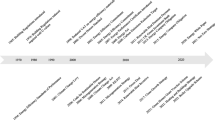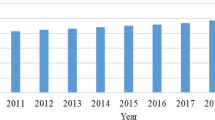Abstract
In this article, we quantify overheating in a sample of hydronically and steam-heated apartment buildings located in New York City, NY. Data have been collected from the archives of companies that provide energy management systems (EMS) to multifamily buildings in the Northeast. Overheating was found in all 18 buildings: the overall average temperature of all buildings was well above 21.1 °C (70 °F) when the EMSs were not in operation, leaving the boilers operate on outdoor reset control, the dominant boiler control type for multifamily buildings. EMS operation is intended to depress overheating. In 15 of the 18 buildings, average temperatures in 100 % of the apartments when EMSs were not in operation were above 21.1 °C (70 °F) [ranging from 21.5 (70.7 °F) to 30.8 °C (87.4 °F)]. In the remaining three buildings, average temperatures in 88 % of apartments were also above 21.1 °C (70 °F) [ranging from 21.5 (70.3 °F) to 29.6 °C (85.2 °F)]. On the other hand, when the EMSs were activated, in seven of 18 buildings, average temperatures in 100 % of the apartments were above 21.1 °C (70 °F) [ranging from 21.5 °C (70.3 °F) to 27.3 °C (81.1 °F)]. In the remaining 11 buildings, average temperatures in 67 % of the apartments were above 21.1 °C (70 °F) [ranging from 21.1 °C (70 °F) to 27.3 °C (81.2 °F)]. Based on this analysis, the estimated average increase in annual space heating energy cost for these buildings due to overheating is approximately 18.6 % when the EMS is off, compared to a baseline average temperature of 21.1 °C (70 °F) all the time. In addition, we employed boiler control systems in three separate hydronically heated buildings that offer aggressive temperature setbacks and one that supplies heat based on apartment temperatures in addition to outdoor temperatures. Results show that after implementing control techniques, heating energy consumption in these three buildings was reduced by 12.7 % to 18.4 % and averaged 16.3 %.







Similar content being viewed by others
Notes
Building America is a U.S. Department of Energy research program focusing on residential energy efficiency.
References
Allen, T. (2011). What to expect when you’re expecting temperature reductions. Presentation delivered at Building America Expert Meeting July 13, 2011.
ASHRAE (2004) Thermal Environmental Conditions for Human Occupancy. ANSI/ASHRAE Standard 55-2004.
Auliciems, A. (1981). Towards a psycho physiological model of thermal perception. Journal of Biometeorology, 13, 147–162.
Auliciems, A. (1983). Psycho-physiological criteria for global zones of building design. Proceedings of the Ninth International Society of Biometeorology Conference, Stuttgart–Hohenheim.
Auliciems, A., & de Dear, R. J. (1986). Air conditioning in Australia I: human thermal factors. Architectural Science Review, 29, 67–75.
de Dear, R. J., & Brager, G. S. (2002). Thermal comfort in naturally ventilated buildings: revisions to ASHRAE Standard 55. Energy and Buildings, 34(6), 549–561.
Dentz, J. (2011). Building America Expert Meeting Report: Hydronic Heating, October 2011. Accessed February 22, 2012. Building America Expert Meeting July 13 2011
Humphreys, M. A. (1978). Outdoor temperatures and comfort indoors. Building Research and Practice, 6(2), 92–105.
Humphreys, M. A., & Nicol, J. F. (2000). Outdoor temperature and indoor thermal comfort: raising the precision of the relationship for the 1998 ASHRAE database of field studies. ASHRAE Transactions, 206(2), 485–492.
International Organization for Standardization (2005). Ergonomics of the Thermal Environment-Analytical Determination and Interpretation of Thermal Comfort Using Calculation of PMV and PPD Indices and Local Thermal Comfort Criteria. ISO7730.
Nicol, J. F., & Humphreys, M. A. (2002). Adaptive thermal comfort and sustainable thermal standards for buildings. Energy and Buildings, 34(6), 563–572.
NYC, Department of Housing Preservation and Development (2013). http://www.nyc.gov/html/hpd/html/tenants/heatand-hot-water.shtml
Robinson, D., & Haldi, F. (2008). Model to predict overheating risk based on an electrical capacitor analogy. Energy and Buildings, 40(7), 1240–1245.
U.S. Census Bureau, Current Housing Reports, Series H150/05, American Housing Survey for the United States: 2005, U.S. Government Printing Office, Washington, DC, 20401, Printed in 2006.
U.S. DOE, EERE, Energy Savers website (2013). http://www.eere.energy.gov/
U.S. Energy Information Administration, Annual energy review. http://www.eia.doe.gov/totalenergy/data/annual/pdf/sec2.pdf, Accessed Oct 2010
Urban Green Council (2010). New York Chapter of the U.S. Green Building Council NYC Green Codes Task Force: Full Proposals EO6.
Varshney, K., Rosa, J. E., & Shapiro, I. (2012). Method to diagnose window failures and measure U-factors on site. International Journal of Green Energy, 9(3), 280–296.
Varshney, K., Shapiro, I., Bronsnick, Y., & Holahan, J. (2011). Air bypass in vertical stack water source heat pumps. HVAC&R Research, 17(5), 692–709.
Acknowledgments
The authors would like to thank the support of the U.S. Department of Energy’s Building America Program and Michael Gestwick of the National Renewable Energy Laboratory for technical guidance. The authors also extend their thanks to the building owners and EMS companies for their support in this project.
Author information
Authors and Affiliations
Corresponding authors
Rights and permissions
About this article
Cite this article
Dentz, J., Varshney, K. & Henderson, H. Overheating in multifamily residential buildings in New York. Energy Efficiency 7, 401–415 (2014). https://doi.org/10.1007/s12053-013-9228-4
Received:
Accepted:
Published:
Issue Date:
DOI: https://doi.org/10.1007/s12053-013-9228-4




